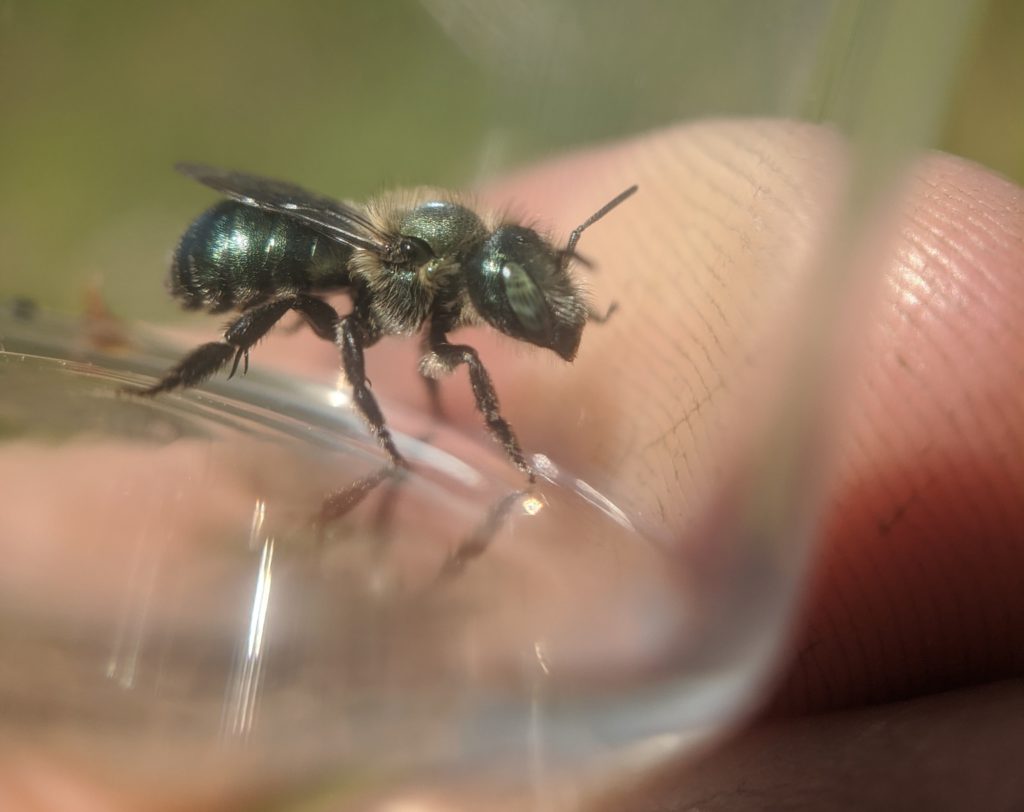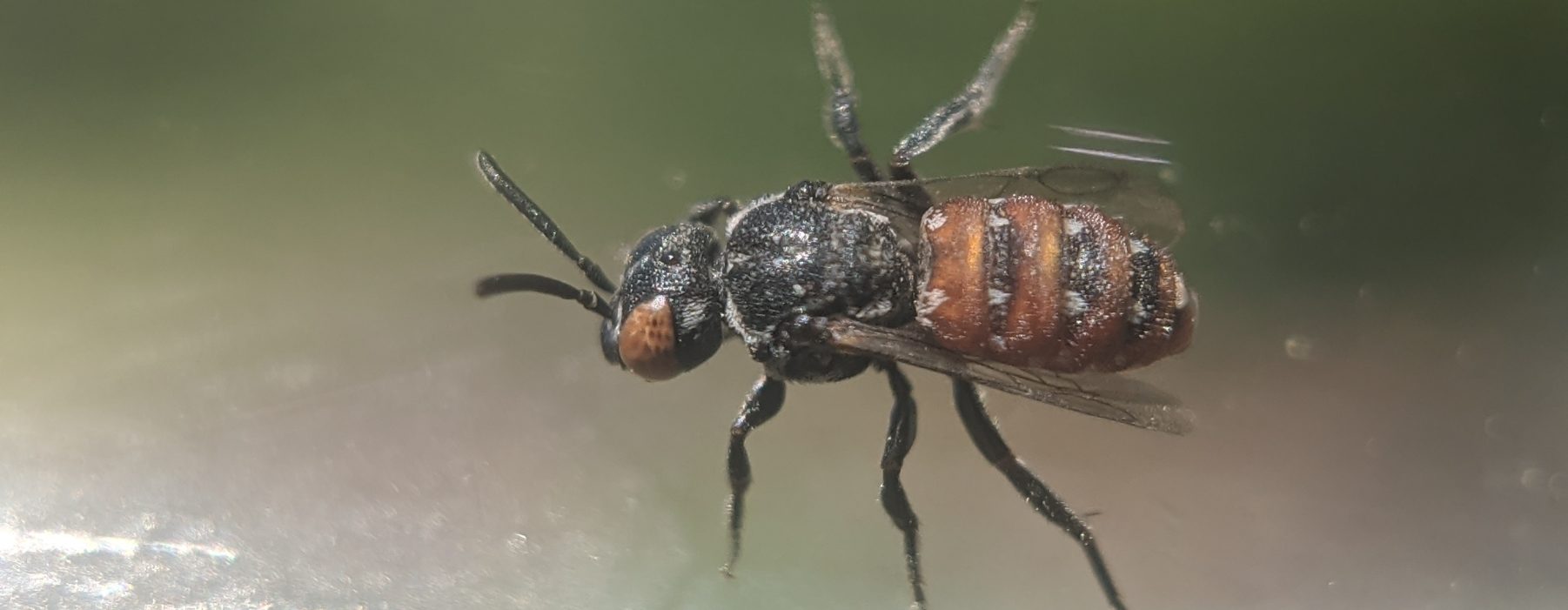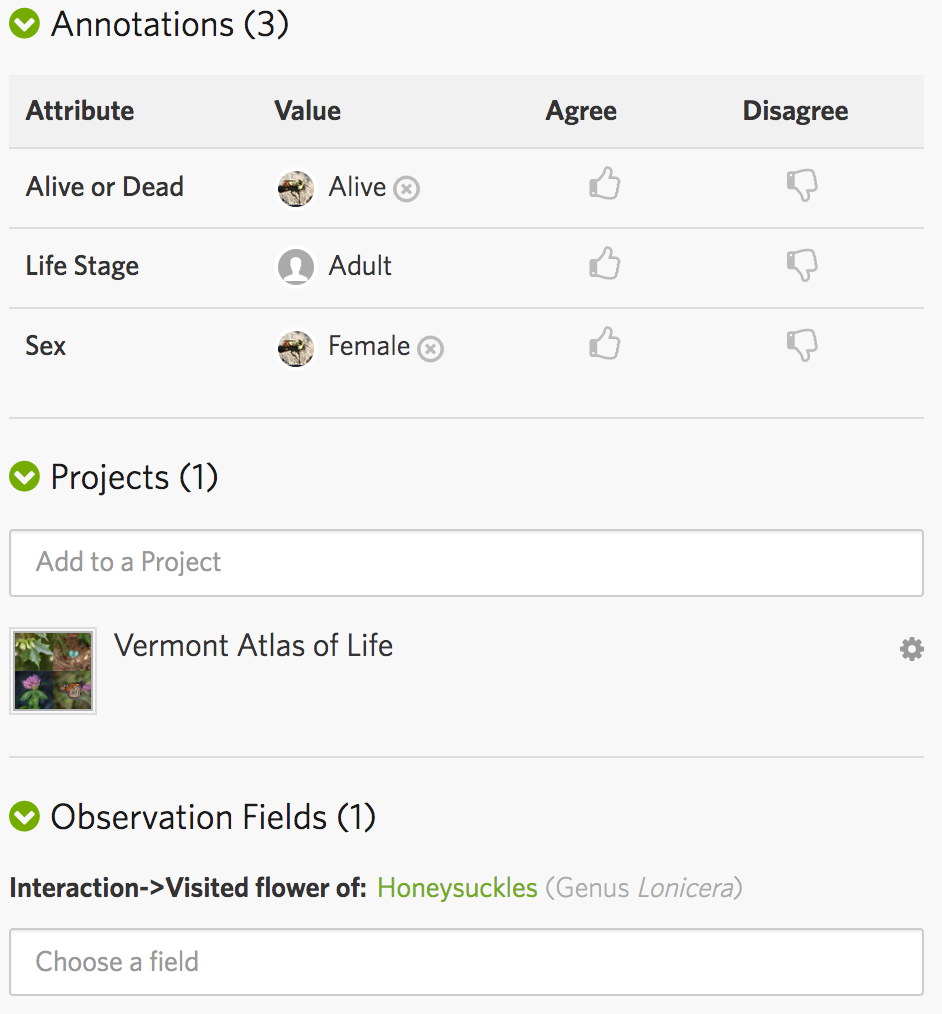Since specimens are expensive to process and store, going forward, we hope community scientists will focus on photographing and reporting live bees. We are using this project on iNaturalist.org to make it as easy as possible.
Report a Sighting
We encourage you to upload all of your awesome (or mediocre) bee photos to iNaturalist. For those who are unfamiliar with it, iNaturalist is a crowd-sourced species identification app powered by artificial intelligence (AI). For the casual nature observer, it allows people to snap photos of animals and plants, and upload them for its AI to provide a match and for members of the iNaturalist community to identify. It is also a social network for naturalists to record information on species, meet others with similar interests and learn.
Once this information is recorded, it is open-source and available to everyone. Scientists, including VCE biologists, often use this data to help write reports and look for trends in species’ populations. Learn more about how the Vermont Atlas of Life uses iNaturalist to collect data on all of Vermont’s species.
The best part about iNaturalist? It is free and available on both computers and mobile devices. Sign up today!
If you need some help getting started, check out our iNaturalist Instructions.
Annotate a Sighting
The value of iNaturalist observations can easily be increased by adding a number of annotations and observation fields. You can annotate your own observations or those of others. Our recommended fields for bees (when relevant) include “Interaction->Visited flower of:“, “Pollen present in corbicula or scopa”, and “Interaction->Preyed upon by:”
Check out our Bombus phenology mission as an example of how we use this data.
Netting Bees for Collection or Photographing
The best way to capture a bee that you want to release once photographed is by using a net. When done properly, netting bees is easy and relatively safe. A good net is important and will make the process much easier. Bioquip has many options – we have found the $16 student net to be sufficient and durable.
A warning to the wise, netting bees is not always easy. Even experts regularly miss and have bees escape from their nets. Of course practice is the best way to learn – netting anything and everything is a good way to get comfortable (and find cool bugs to iNat).
A good philosophy when starting netting is to swing at everything, even if you aren’t sure its a bee. Swing fast and deliberately and follow through past your target so that it ends up in the end of the net. Additional swirling of the net can force the insects away from the opening. Once you think you have a bug in the net, flip the end of the net around the rim to trap whatever is in the net.
Helpful videos
Advanced Bee Netting
How to Net Collect Wasps and Bee
I caught one – now what?
Once you catch a bee, you can place it in a jar or glass vial to get a closer look. Make sure to have your container(s) set out ahead of time so that you can quickly remove the bees. In general, you will not get stung by a bee unless you physically grab it, so it is usually safe to place your hand and the jar directly inside the net.
Before opening the closed net, snap the net to force the bees to the bottom. Hold the bag closed with one hand and bring the jar up to the opening. Then you can quickly open the net and pin the bees inside the jar against the net. Remove quickly and close the lid.

A Mason Bee (Osmia) in a jar
Photographing Bees
Check out our Bee Photography page for some tips and tricks on getting good bee photos.








